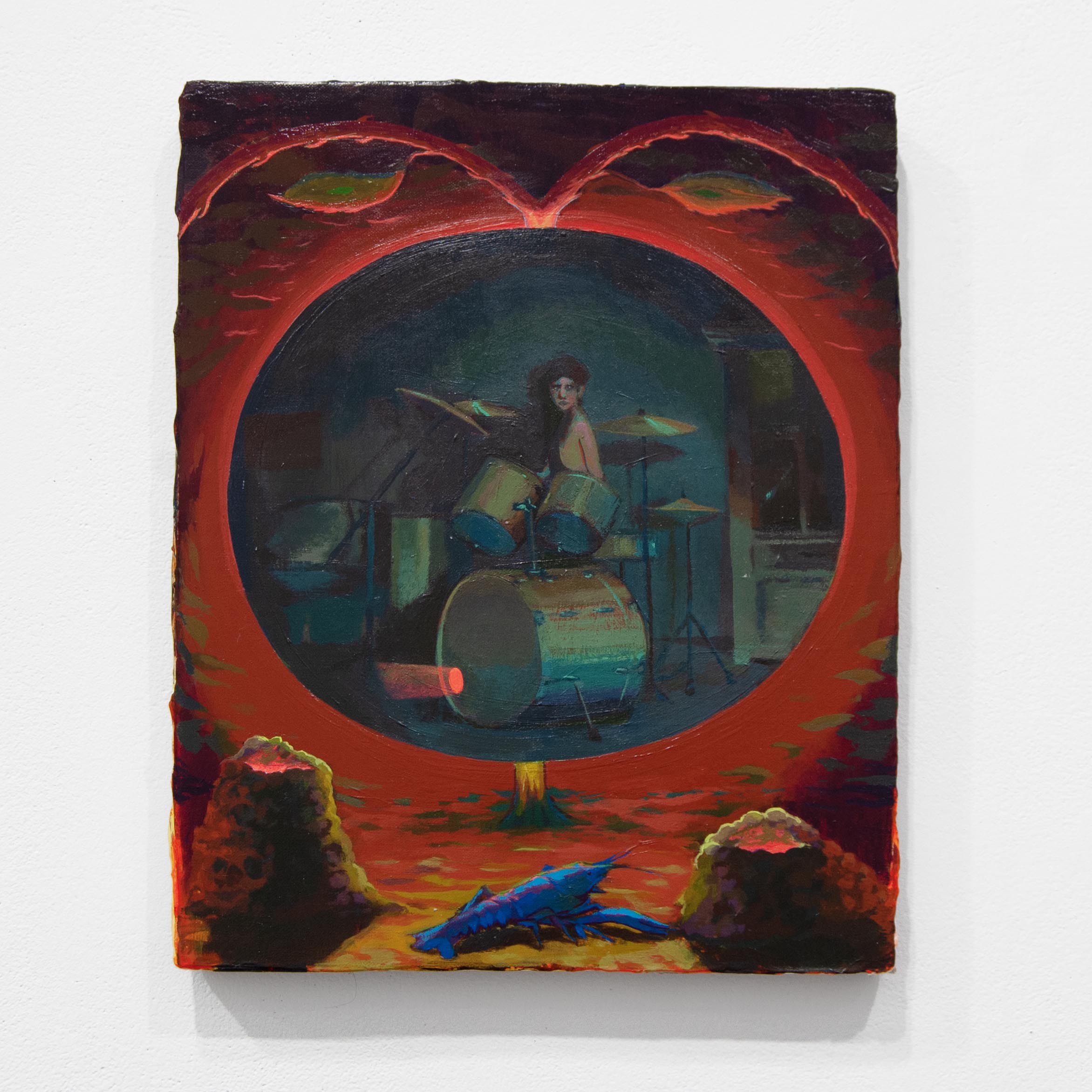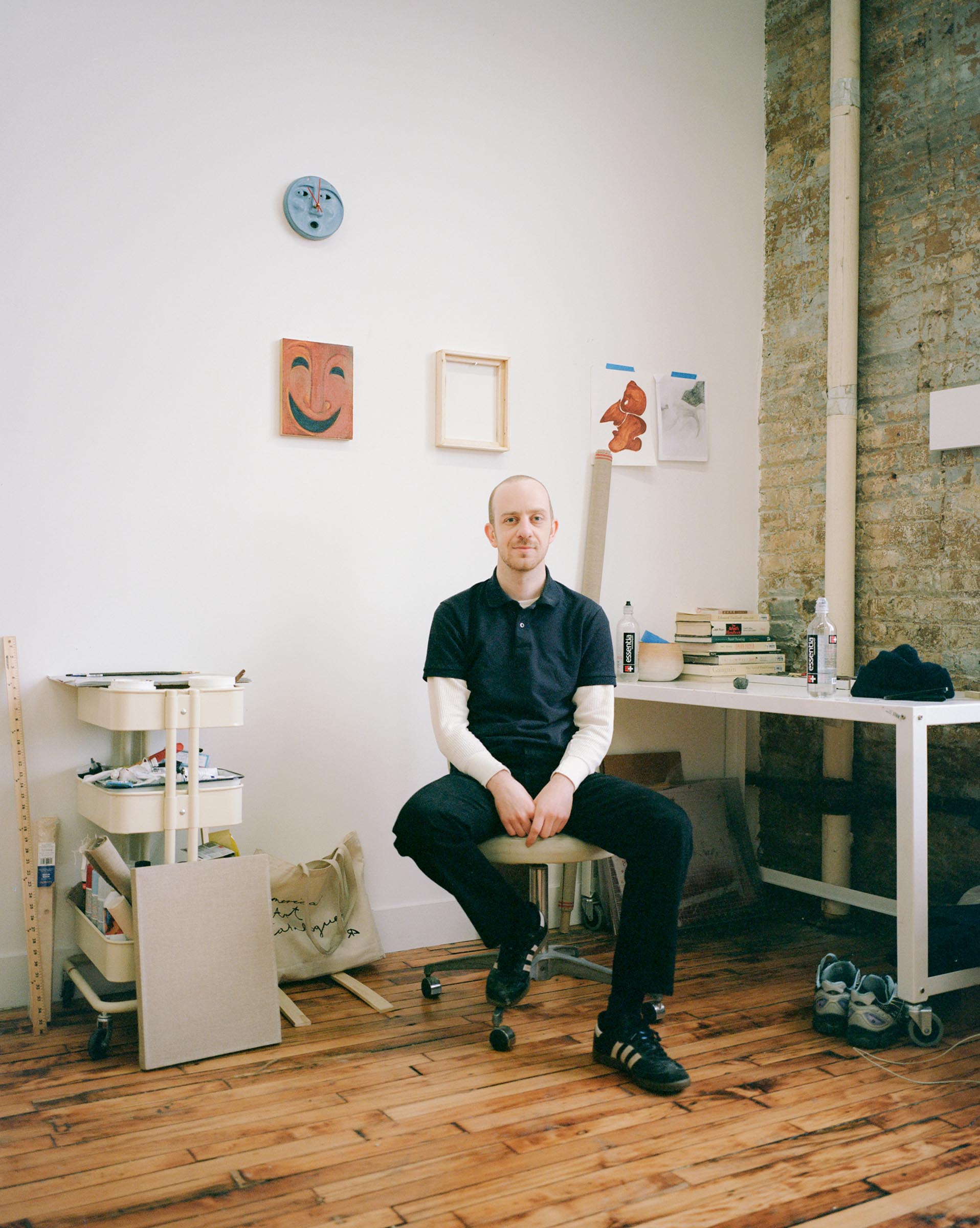How did you get into making art?
I was a pretty serious introvert as a child, an odd duck. I remember spending lots of time alone drawing bisections of imaged architecture and caricatures just to entertain myself. At a certain age, people started telling me that I had an aptitude for it. Thankfully, my parents were incredibly supportive. My junior high school didn’t have an art program so my mother went to the local university’s Continuing Education Department and inquired if I could enroll in an art course for adults; she even brought a portfolio bag of my drawings to the instructor. Fortunately, it worked and I was admitted into my first art course: a Drawing Foundations night class. That changed everything for me, learning how basic principles can be combined to create an image through observation while simultaneously realizing that I could do it. It was like magic. I still remember the name of the instructor: Mark Richard.
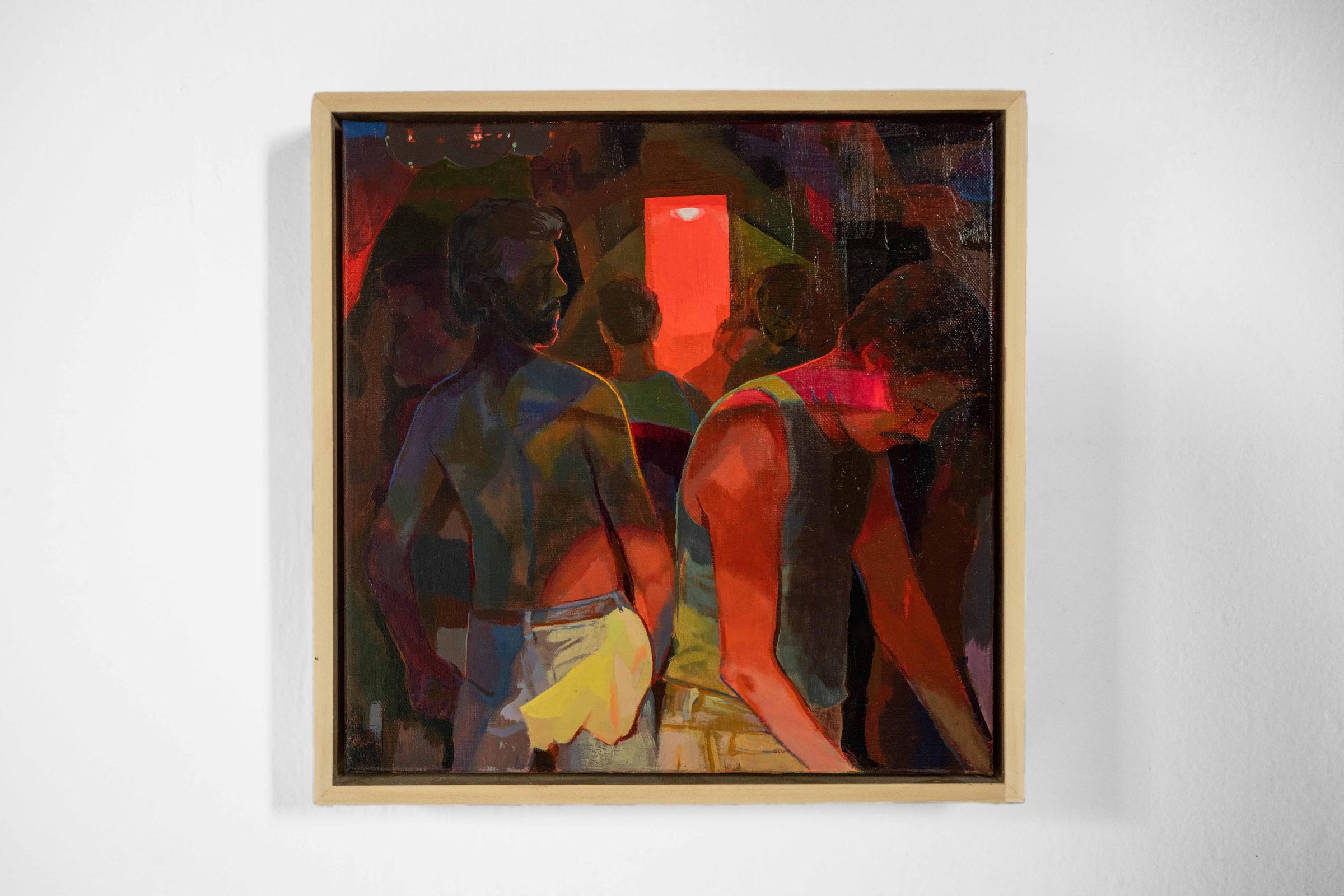
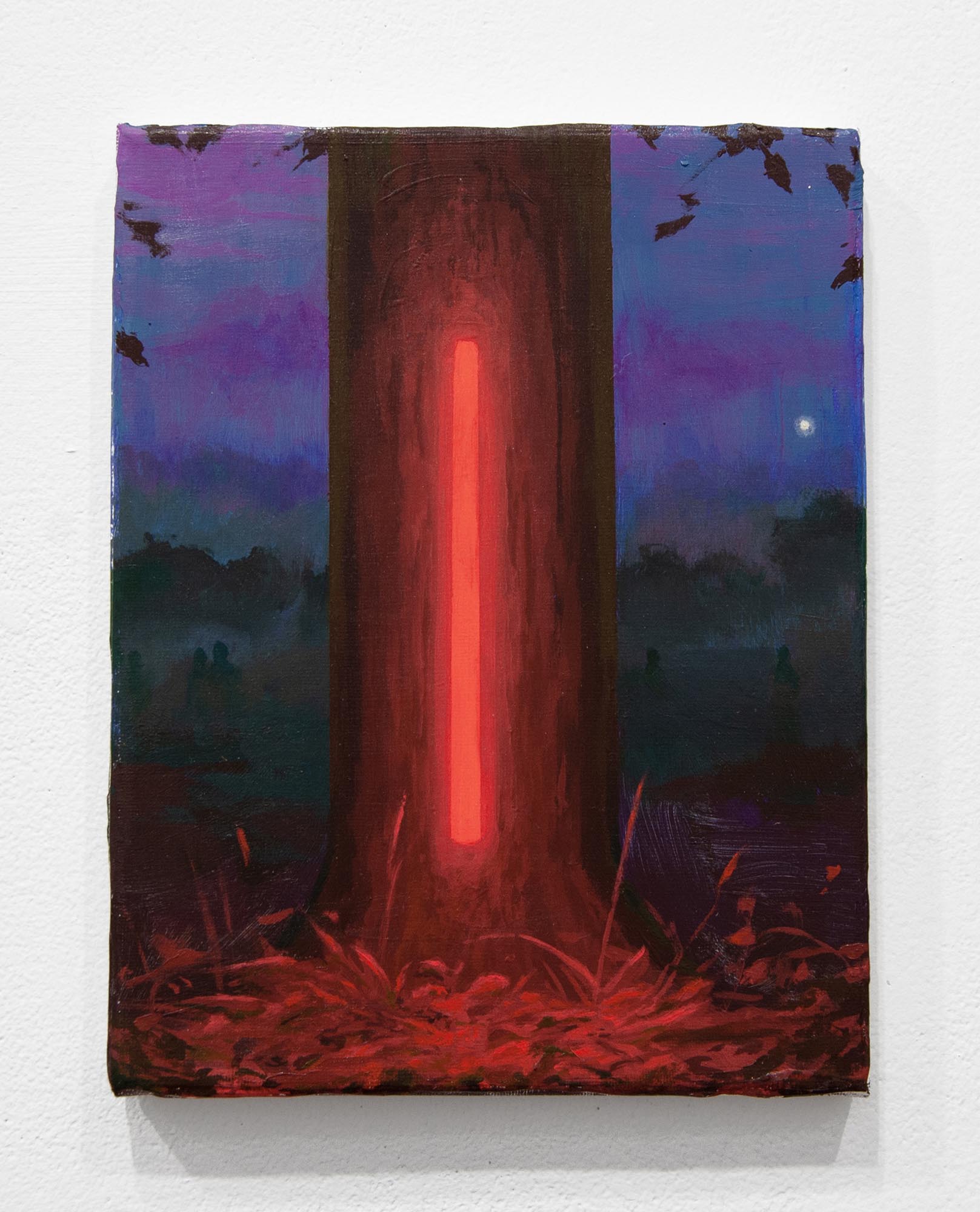
What are you currently working on?
I’m participating in a five-month artist residency at the HouseofCards Artist Retreat located on a 30-acre property in Arnaudville, Louisiana. I’m originally from Lafayette–about 20 miles south. For the spring I relocated down south from Western New York to conduct research on queer vernacular Carnival traditions specific to the Acadian region of South Louisiana. I’m just settling in really, as I’m in preparation for two solo exhibitions this year: Towards Gallery in Toronto this June and Wolfgang Gallery in Atlanta this November.
It’s also an investigation on light, vision, and seeing–a historic obsession of painting throughout time.
Jacob Todd Broussard

What inspired you to get started on this body of work?
The Mystic Krewe of Apollo is the oldest, continuous gay Mardi Gras krewe in the state of Louisiana, relocating from New Orleans to my hometown of Lafayette in 1977. After some seismic life changes, I returned to Louisiana to reflect on ideas of transition, metamorphosis, and transformation while landing back on my feet. It only feels appropriate to turn towards Carnivale–a window of time where all fantastical dimensions are possible through a phantasmagoria of mythmaking. I’ve been digging in the archives of the krewe, looking at photographs and memorabilia from ’77 onwards. Through the act of costuming, these queer ancestors embodied ideas of duality, feeling, the grotesque, and the ornamental. All of these played out in the form of a ball’s procession, a coming-of-age ritual. There’s something incredible self-made about the embodied characters and archetypes that these folks put on, just for a moment in time. I’ve been thinking about the nature of conflicting feelings, of beauty and danger, the sacred and the profane, the singular in relation to the plural, on longing for union but remaining an individual. These sensations feel like a Janus of reality, how one experiences the world rather than in absolutes. I’m also interested in how queerness functions outside of a metropolitan region: what happens when it collides with a landscape that may or may not support its ambition? Is there a freedom that comes with that, where forms of embodiment step outside of definition and become their own entities, in other words, truly queer abstract potentials? Growing up here queer and Cajun offered its own mirrored vernaculars which I think about often. Culturally, Cajuns are pretty strange, one could argue even containing a latent queer dimension in the context of American culture. The region itself has a dark mythos. A late cousin on my mother’s side was a key member of the krewe, so there’s a familial dimension to this project.
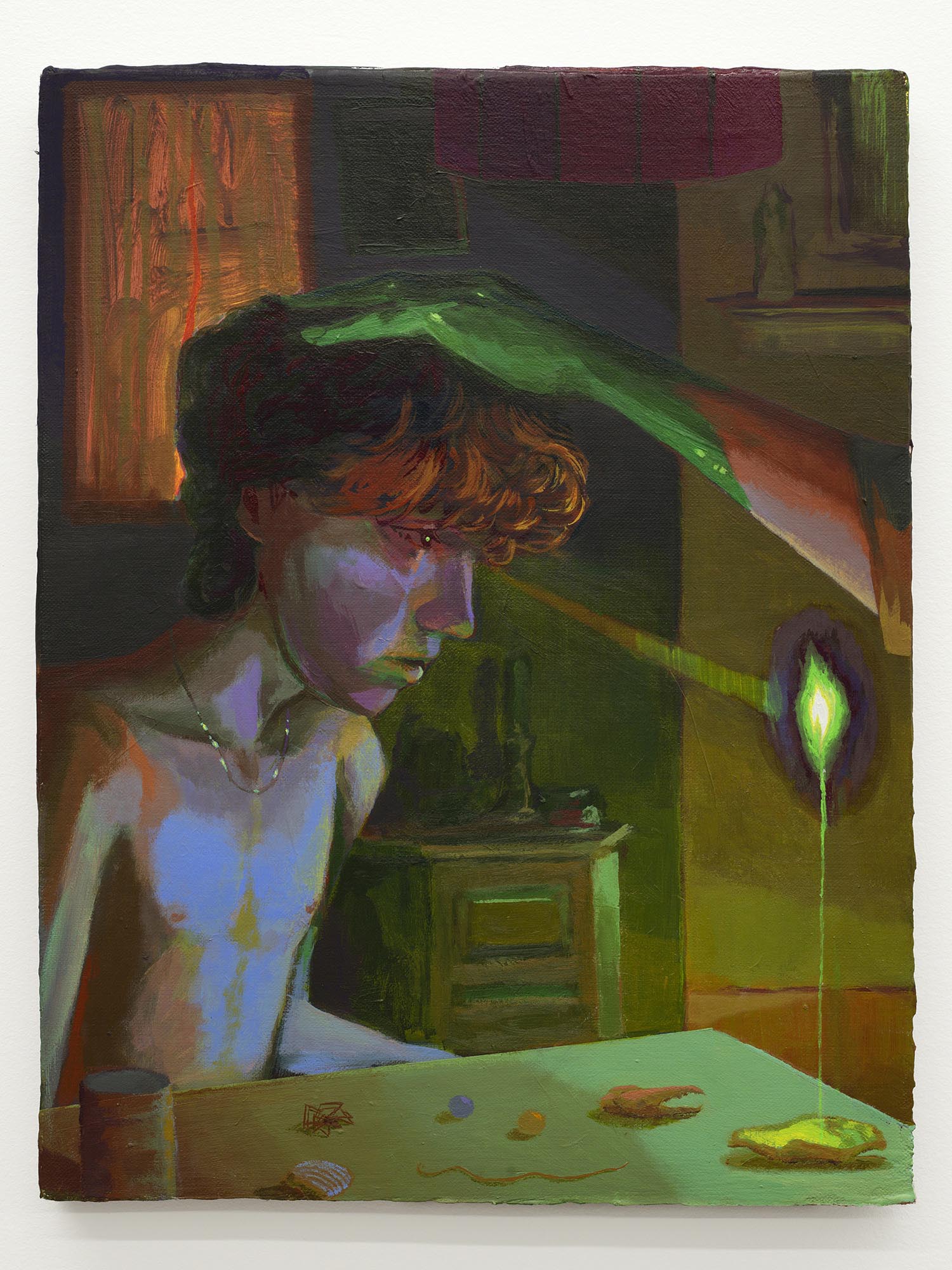
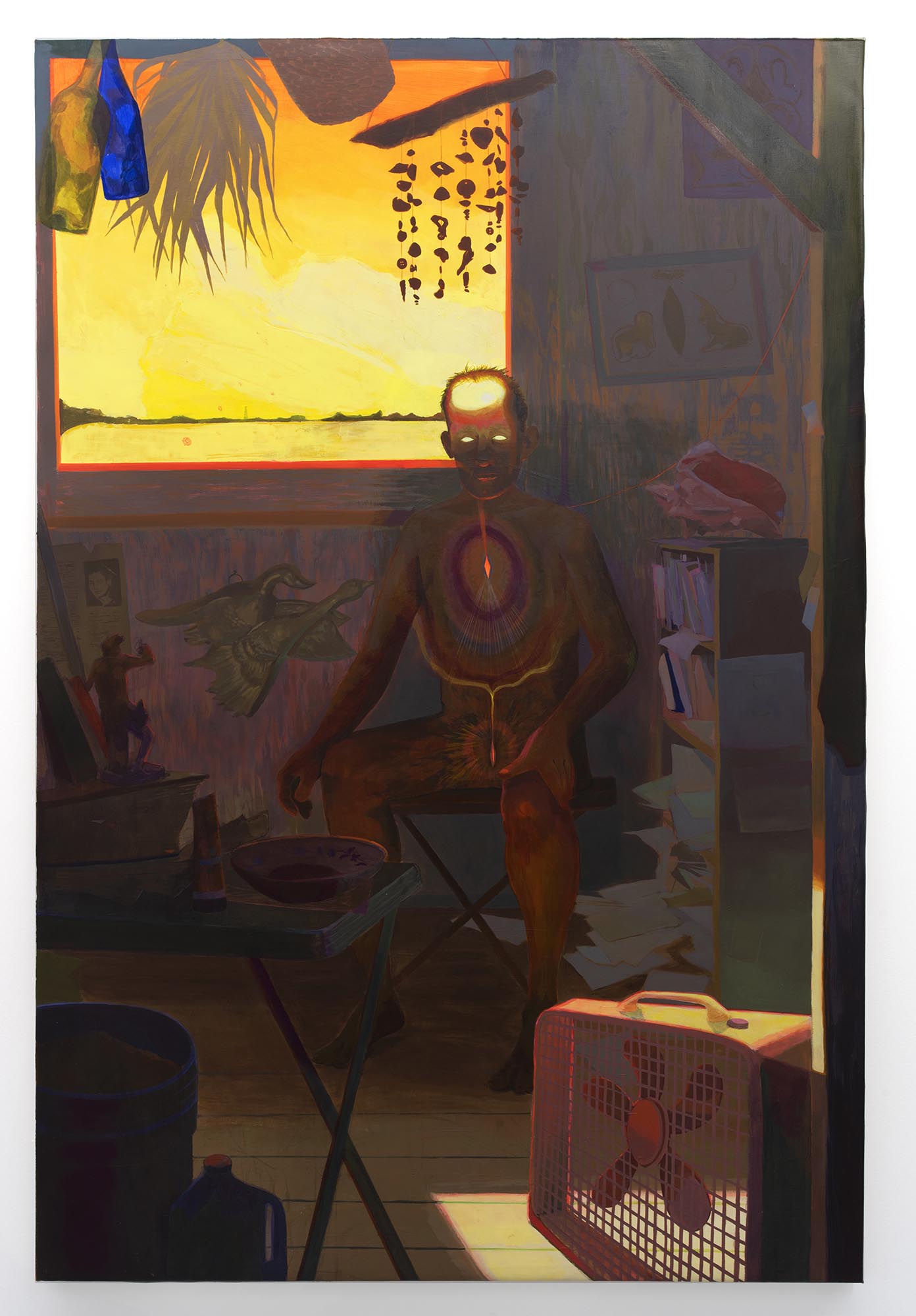
Do you work on distinct projects or do you take a broader approach to your practice?
It’s a two-sided approach. I have a larger biomythography project that folds in all of my interests and I don’t see this project being a separate entity to that work. The larger project follows a hermit archetype as he travels through seven interiors/castles of the spirit. Each of these spaces are “sites/sights” of queer interiorities that allude to new forms and subjectivities–the hermit’s shack, a local gay night club, a monk’s stylite. It’s also an investigation on light, vision, and seeing–a historic obsession of painting throughout time. Can you truly see something that you don’t know? Much of the narrative aspect to the work is inspired by painter Forrest Bess, his life has been a thematic cornerstone for my practice. I similarly attempt to locate myself between things through the act of image making.
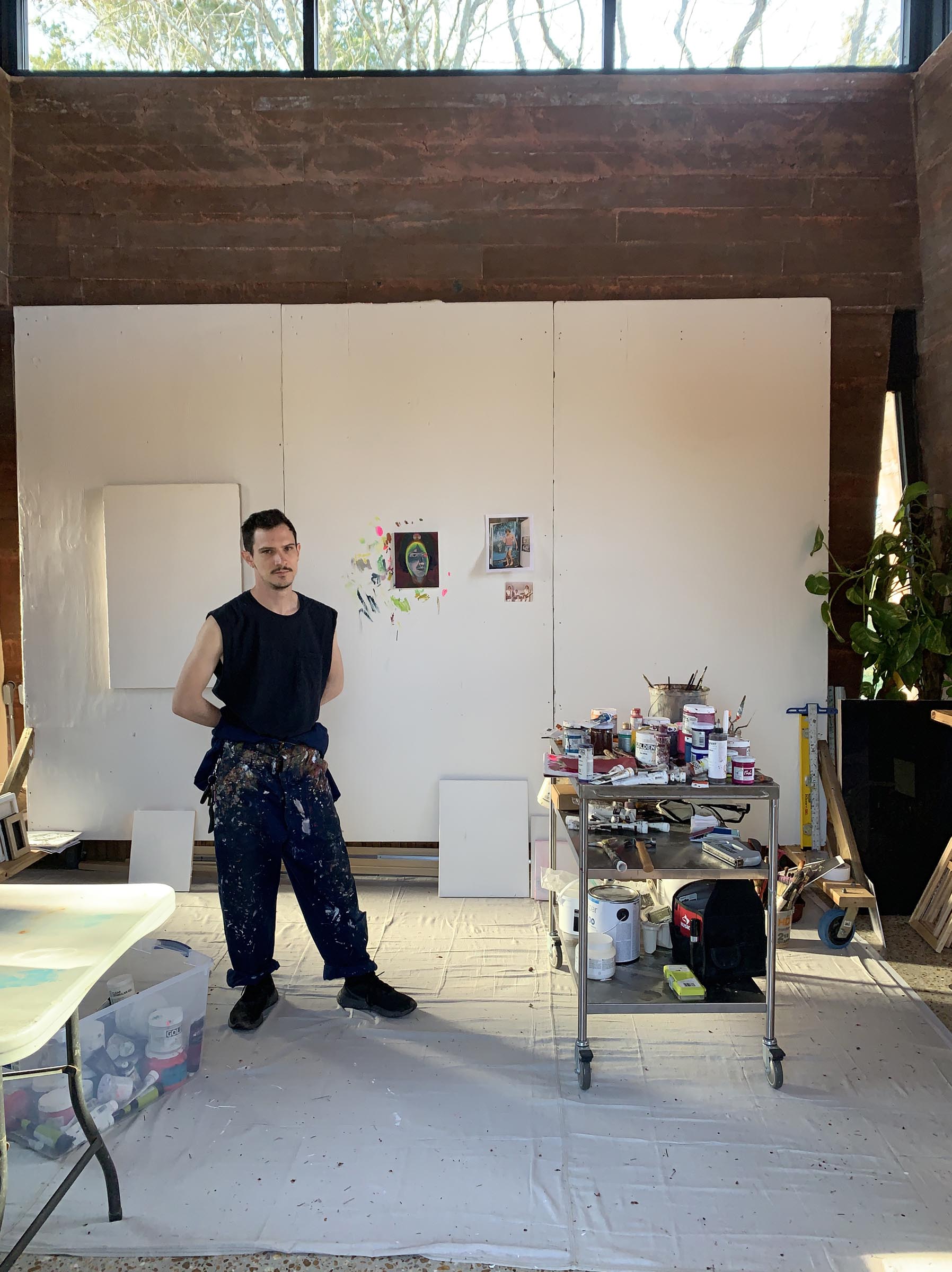
What’s a typical day like in your studio?
I usually get to the studio early in the morning and stay for the entire day. The morning is good for work or action, lots of moving different parts around, looking at images, and getting my brain warmed up. And the afternoon is better for reading and organizing ideas. I’m trying to carve out more time just for drawing. I’ll spend the day in the studio, but I’ll make sure to take lots of breaks and walks. Being on such a lush prarie out in the country allows for plenty of peaceful strolls and engagement with the natural wildlife of this region. The studio sits right along Bayou Bourbeaux.
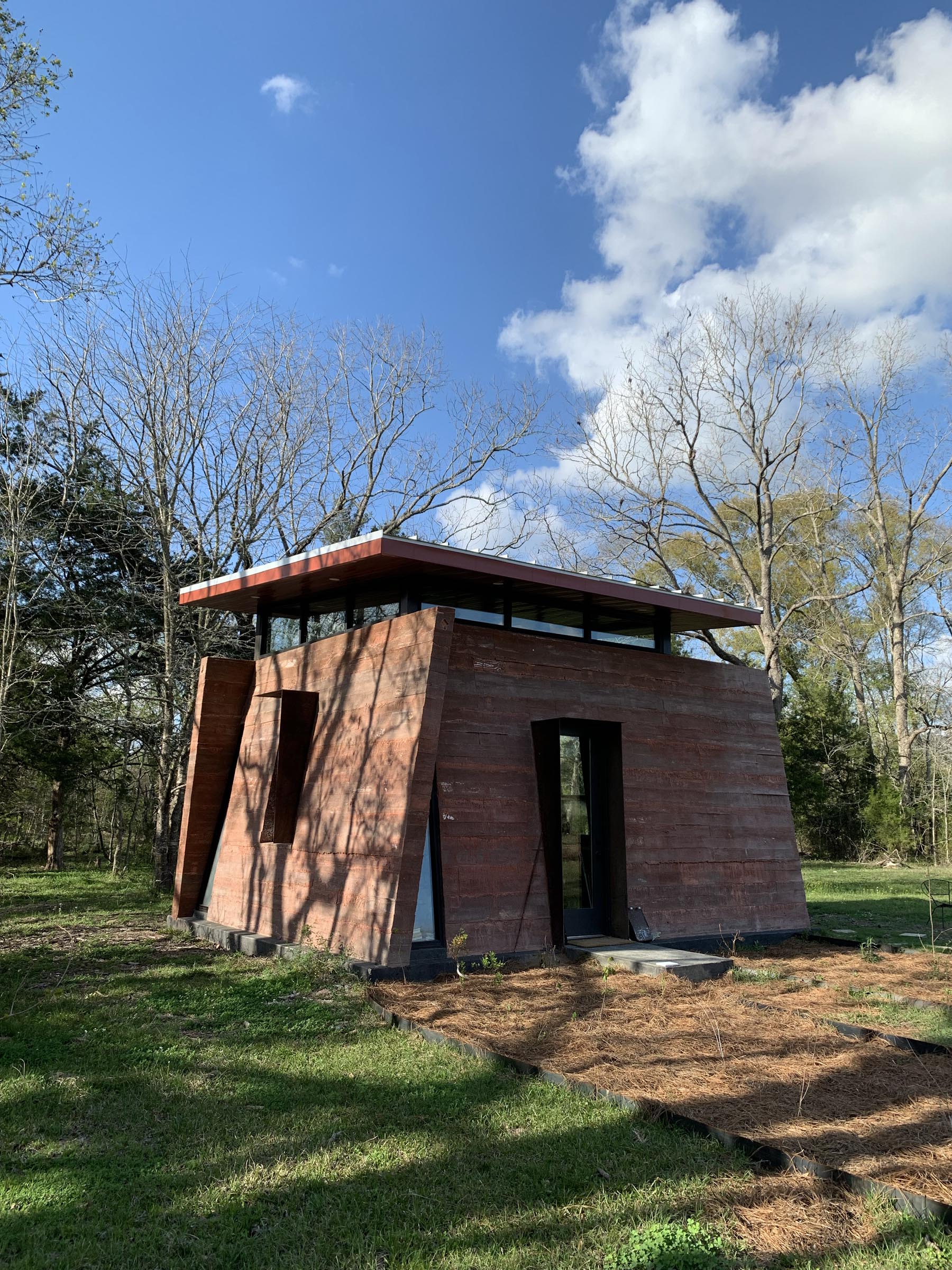
Who are your favorite artists?
The sculptures and practice of Dario Robleto have always deeply moved me. His sensitivity to materials parallels Felix Gonzalez Torres’, another artist I’ve admired for his alchemical approach. The sculptures and paintings of Paul Thek are hauntingly esoteric and beautiful. I love Mike Kelley. In terms of painters, John Singer Sargent has always been someone I’ve loved. And Bonnard for his use of space, light, and how it corresponds to memory. Jack Whitten’s way of thinking about painting and abstraction is truly unmatched. The paintings of Michaël Borremans are such mysterious, psychological images. Mama Andersson for storytelling. Chris Ofili’s fearlessness as a painter is aspirational. The painter Jess’s use of materiality is mindblowing. An artist I’ve been possessed by for close to ten years now is abstract painter Forrest Bess; his work is a testament to so many things that I believe and feel. And of course, dear friends of mine that inspire me: Alex Jackson, Amaryllis DeJesus Moleski, Emile Mausner, Azza El Siddique, Libby Rosa, Gerald Sheffield, & Kati Gigenheimer to name a few. Too many to list.
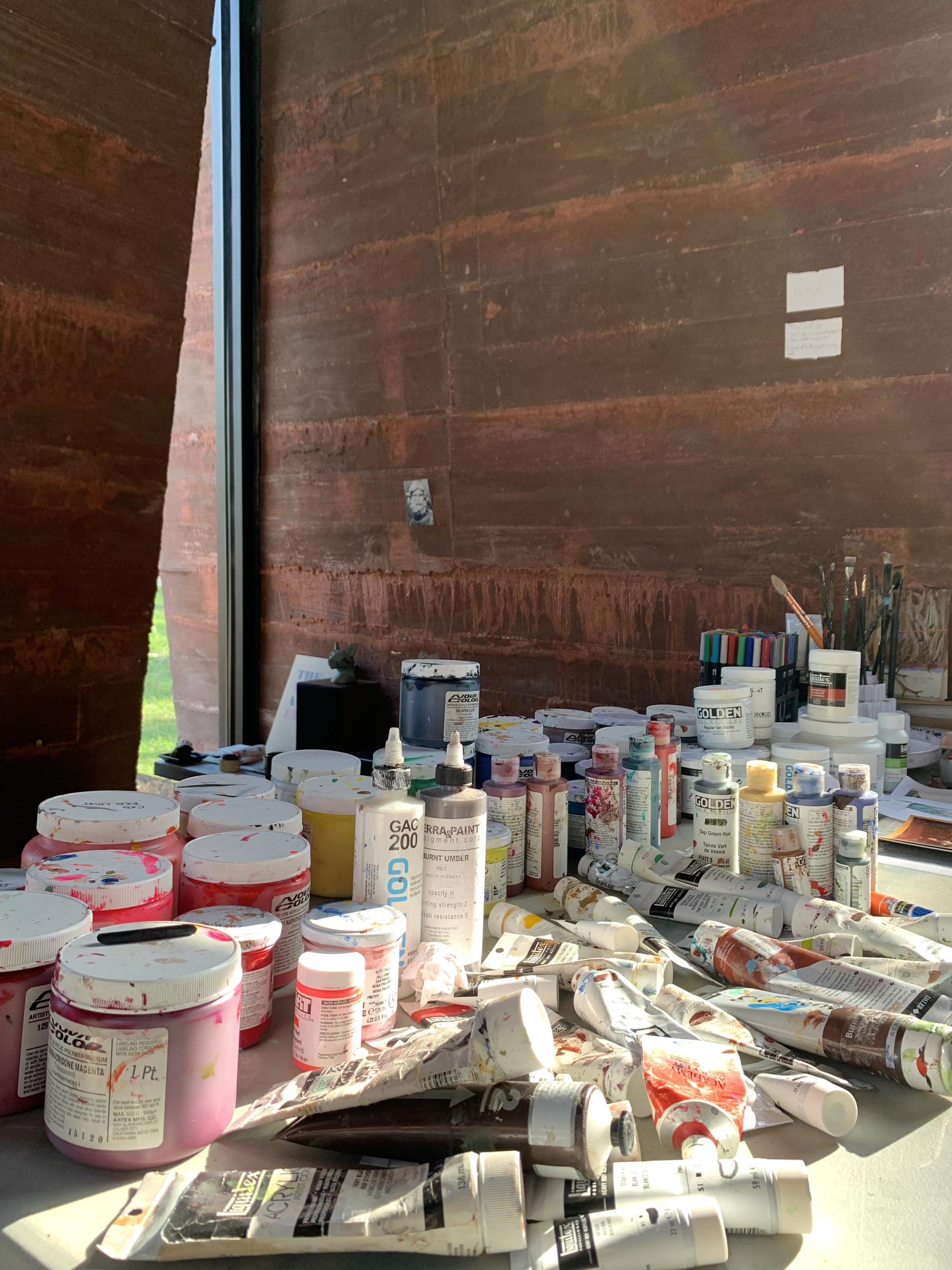
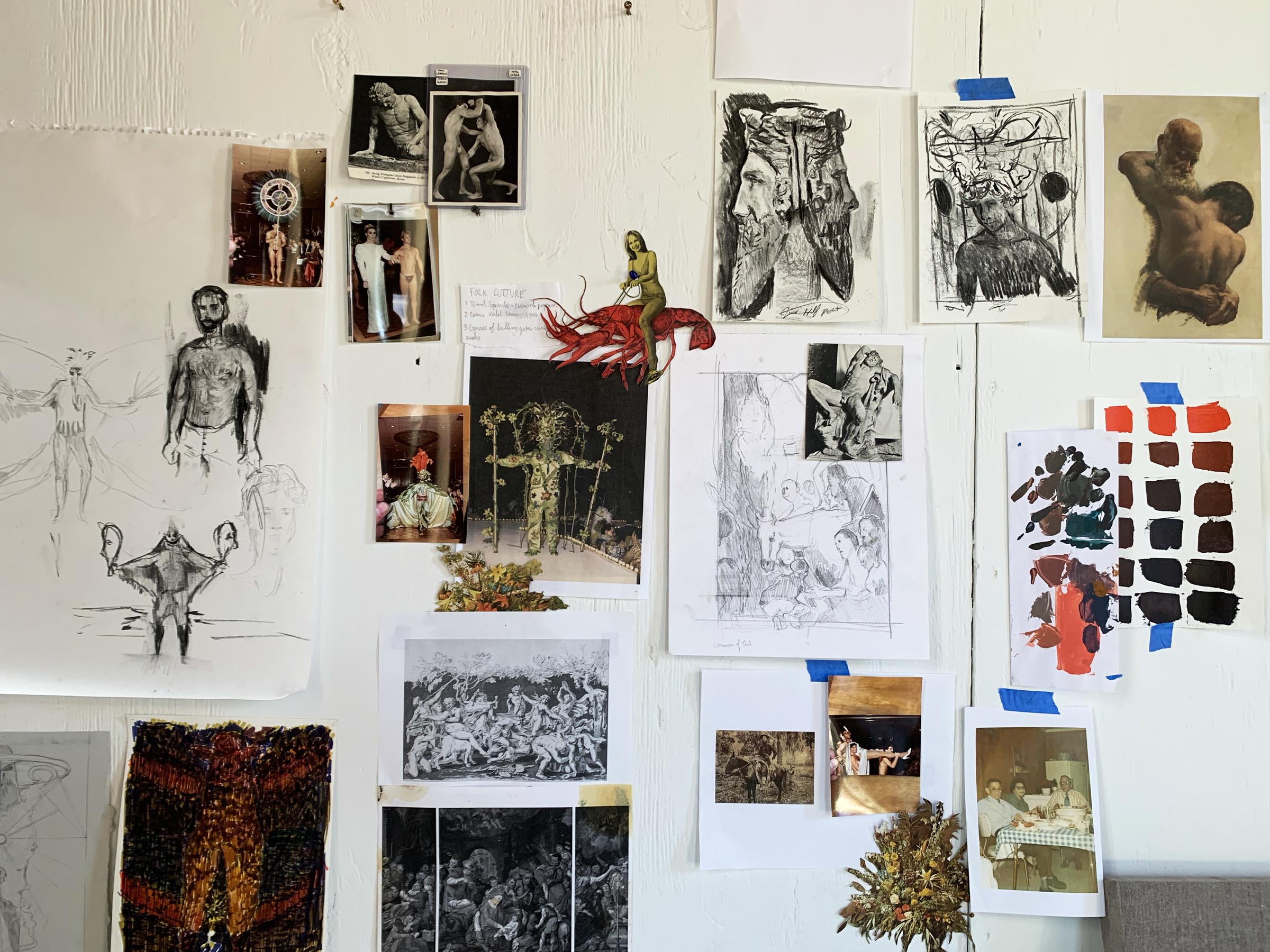
Where do you go to discover new artists?
I’m trying to avoid the easy pitfalls of social media, so I look to discover artists from old art books, regularly found at thrift stores. A friend and I used to thrift for books to build up our image library and we would come across strange catalogues for long forgotten exhibitions. I think asking other artist friends “who’s work makes you excited?” is another great way of discovering new artists. Also, I look up pervious exhibitions or group shows at galleries or museums, particularly ones that have stand out programming and show artists I admire. That’s another great way to come across new names.
Learn more about the artist by visiting the following links:












